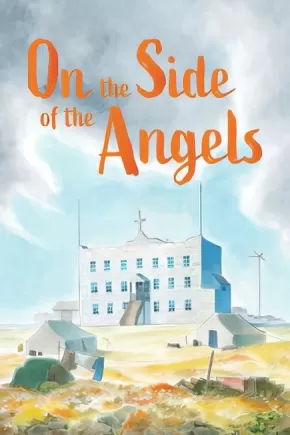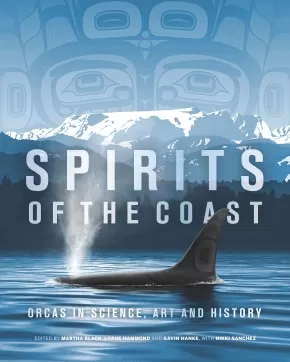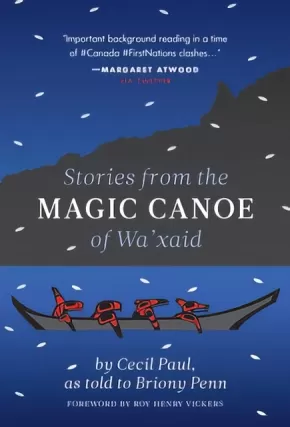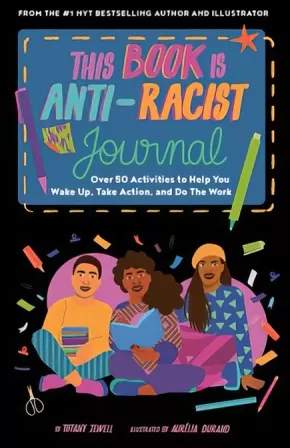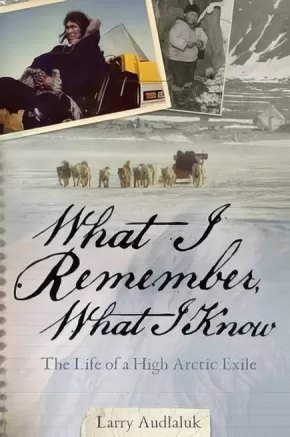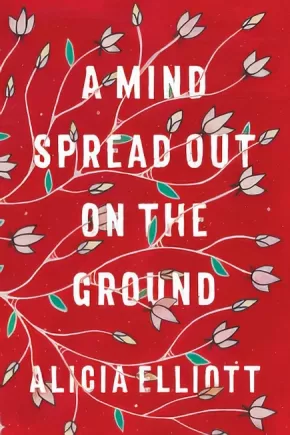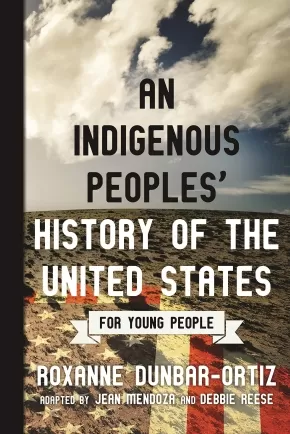History
Synopsis:
How can we heal in the face of trauma? How can we transform intergenerational pain into a passion for community and healing?
Presenting herself as “Myrtle,” residential school survivor and Indigenous television personality Bevann Fox explores essential questions by recounting her life through fiction. She shares memories of an early childhood filled with love with her grandparents—until she is sent to residential school at the age of seven. Her horrific experiences of abuse there left her without a voice, timid and nervous, never sure, never trusting, affecting her romantic relationships and family bonds for years to come.
This is the story of Myrtle battling to recover her voice. Genocidal Love is a powerful confirmation of the long-lasting consequences of residential school violence —and a moving story of finding a path towards healing.
Awards
- 2021 Indigenous Voices Awards winner for Published Prose in English: Creative Nonfiction and Life-Writing
Reviews
“A riveting, often difficult, brave, important book. ” —Deanna Reder, Chair, Department of Indigenous Studies, Simon Fraser University
“A riveting and courageous reflection. . . . Genocidal Love is unique in its detailed account of the often re-traumatizing effects of the legal and bureaucratic barriers of compensation programs predating the Truth and Reconciliation Commission. ” —Jesse Rae Archibald-Barber, editor of kisiskâciwan and co-editor of Performing Turtle Island
“Fox tears beauty from the jaws of genocide, daring to claim love beyond settler imaginings—love that nurtures decolonial futures and makes possible a more just world. ”—Sam McKegney, author of Magic Weapons and Masculindians
Educator Information
A forward from Michelle Coupal explains more about "Genocidal Love—a story that Bevann tells about herself outside the boundaries of what constitutes fiction and non-fiction".
Additional Information
256 pages | 5.00" x 7.00"
Synopsis:
"Then one day a ‘flyable’ took me away from our world through the sky to a dark and desolate place.”
Jose Kusugak had a typical Arctic childhood, growing up playing games, enjoying food caught by hunters, and watching his mother preparing skins. But he was one of the first generation of Inuit children who were taken from their homes and communities and sent to live in residential schools. In this moving and candid memoir, Jose tells of his experiences at residential school and the lifelong effects it had on him.
Educator & Series Information
Recommended for ages 12 to 15.
Included in the Canadian Indigenous Books for Schools 2020/2021 resource list for grades 6 to 9 for Social Studies, Science, and English Language Arts.
A personal, real story that introduces young readers to the memoir genre.
Inhabit Education Books is proud to introduce Qinuisaarniq (“resiliency”), a program created to educate Nunavummiut about the history and impacts of residential schools, policies of assimilation, and other colonial acts that affected the Canadian Arctic.
Each resource in the program has been carefully written and reviewed to include level-appropriate opportunities for students to learn about colonial acts and policies that affected Inuit. Topics covered include the residential school system, relocations to settlements and the High Arctic, sled dog slaughters, the use of E and W numbers, and others. These acts and policies created long-lasting impacts on Inuit individuals and communities, which are still being felt today.
The resources in this program include personal interviews, testimony, and writing; non-fiction informational resources; and information about traditional Inuit practices.
Additional Information
56 pages | 9.00" x 6.00". | b&w illustrations
Synopsis:
Since the Truth and Reconciliation Commission released its Calls to Action in June 2015, governments, churches, non-profit, professional and community organizations, corporations, schools and universities, clubs and individuals have asked: “How can I/we participate in reconciliation?”
Recognizing that reconciliation is not only an ultimate goal, but a decolonizing process of journeying in ways that embody everyday acts of resistance, resurgence, and solidarity, coupled with renewed commitments to justice, dialogue, and relationship-building, Pathways of Reconciliation helps readers find their way forward.
The essays in Pathways of Reconciliation address the themes of reframing, learning and healing, researching, and living. They engage with different approaches to reconciliation (within a variety of reconciliation frameworks, either explicit or implicit) and illustrate the complexities of the reconciliation process itself. They canvass multiple and varied pathways of reconciliation, from Indigenous and non-Indigenous perspectives, reflecting a diversity of approaches to the mandate given to all Canadians by the TRC with its Calls to Action.
Together the authors — academics, practitioners, students and ordinary citizens — demonstrate the importance of trying and learning from new and creative approaches to thinking about and practicing reconciliation and reflect on what they have learned from their attempts (both successful and less successful) in the process.
Reviews
“Alerts Canadians to what must be done if we are to seriously embrace the goal of decolonizing relations with Indigenous peoples." – Peter Russell, Professor Emeritus, Department of Political Science, University of Toronto
Educator & Series Information
Table of Contents
Introduction
Ch. 1—Paved with Comfortable Intentions: Moving Beyond Liberal Multiculturalism and Civil Rights Frames on the Road to Transformative Reconciliation
Ch. 2—Perceptions on Truth and Reconciliation: Lessons from Gacaca in Post-Genocide Rwanda
Ch. 3—Monitoring That Reconciles: Reflecting on the TRC’s Call for a National Council for Reconciliation
Ch. 4—A Move to Distract: Mobilizing Truth and Reconciliation in Settler Colonial States
Ch. 5—Teaching Truth Before Reconciliation
Ch. 6—“The Honour of Righting a Wrong:” Circles for Reconciliation
Ch. 7—What Does Reconciliation Mean to Newcomers Post-TRC?
Ch. 8—Healing from Residential School Experiences: Support Workers and Elders on Healing and the Role of Mental Health Professionals
Ch. 9—Learning and reconciliation for the collaborative governance of forestland in northwestern Ontario, Canada
Ch. 10—Bending to the Prevailing Wind: How Apology Repetition Helps Speakers and Hearers Walk Together
Ch. 11—How do I reconcile Child and Family Services’ practice of cultural genocide with my own practice as a CFS social worker?
Ch. 12—Repatriation, Reconciliation, and Refiguring Relationships. A Case study of the return of children’s artwork from the Alberni Indian Residential School to Survivors and their families
Other contributors to this work include: Peter Bush, Tracey Carr, Brian Chartier, Mary Anne Clarke, Ko’ona Cochrane, Aimée Craft, Raymond F. Currie, Rachel (Yacaa?ał) George, Erica Jurgens, Régine Uwibereyeho King, Sheryl Lightfoot, David B. MacDonald, Benjamin Maiangwa, Cody O’Neil, Paulette Regan, Cathy Rocke, John Sinclair, Andrea Walsh, Melanie Zurba
This book is part of the Perceptions on Truth and Reconciliation series.
Additional Information
336 pages | 6.00" x 9.00"
Synopsis:
Experience the riveting, powerful story of the Native American civil rights movement and the resulting struggle for identity told through the high-flying career of West Coast rock 'n' roll pioneers Redbone.
You've heard the hit song "Come and Get Your Love" in the movie Guardians of the Galaxy, but the story of the band behind it is one of cultural, political, and social importance.
Brothers Pat and Lolly Vegas were talented Native American rock musicians that took the 1960s Sunset Strip by storm. They influenced The Doors and jammed with Jimmy Hendrix before he was "Jimi," and the idea of a band made up of all Native Americans soon followed. Determined to control their creative vision and maintain their cultural identity, they eventually signed a deal with Epic Records in 1969. But as the American Indian Movement gained momentum the band took a stand, choosing pride in their ancestry over continued commercial reward.
Created in cooperation of the Vegas family, authors Christian Staebler and Sonia Paoloni with artist Thibault Balahy take painstaking steps to ensure the historical accuracy of this important and often overlooked story of America's past. Part biography and part research journalism, Redbone tells a vivid story about this neglected chapter of American history.
Reviews
"Compelling reading for fans of roots rock and Native American history in middle school and up." —School Library Journal
"An entertaining, enlightening history for music fans. Balahy’s loose, energetic drawings; imaginative layouts; and playful use of color make everything pop." —Publishers Weekly
"Musicians with heart put their people before profits in an inspirational tale. Well-researched and well-paced, this book will introduce a new generation to the music and impact of Redbone." —Kirkus Reviews (Starred review)
"In some eyes, the guys in Redbone, still the most successful Native American rock band this country has produced, are indeed superheroes. Not all heroes wear capes, and some wear buckskin." —Houston Chronicle
"In the early sixties, Pat and his brother, Lolly, perform on the Sunset Strip, crossing paths with The Byrds, The Doors, and Jimi Hendrix, who gives the brothers the idea of forming 'an all Indian band. That'd make this country sit up.' The seed germinates and Redbone bursts forth. Staebler and Paoloni offer a lens onto aspects of the twentieth-century Native American struggle for civil rights and injustices like forced schooling and racist policing, as well as the 1968 birth of the American Indian Movement. Balahy's art is particularly splendid and well-varied in style for the complex subject matter." —Booklist
Additional Information
160 pages | 7.00" x 10.00"
Synopsis:
When Nellie Winters was 11 years old, she was sent to attend the Nain Boarding School, a residential school 400 kilometres from her home. In this memoir, she recalls life before residential school, her experiences at the school, and what it was like to come home.
Accompanied by the author’s original illustrations, this moving, often funny memoir sheds light on the experiences of Inuit residential school survivors in Labrador.
Educator & Series Information
Recommended for ages 11-14.
This book is recommended in the Canadian Indigenous Books for Schools 2020/2021 resource list for grades 5 to 7 for English Language Arts and Social Studies.
This book is part of the Qinuisaarniq (“resiliency”) program. This is a program created to educate Nunavummiut about the history and impacts of residential schools, policies of assimilation, and other colonial acts that have affected the Canadian Arctic.
Each resource has been carefully written and reviewed to include level-appropriate opportunities for students to learn about colonial acts and policies that have affected Inuit. These acts and policies created long-lasting impacts on Inuit individuals and communities, which are still being felt today.
The resources in this program include personal interviews, testimony, and writing; non-fiction informational resources; and information about traditional Inuit practices.
Additional Information
26 pages | 9.00" x 7.00" | Transcribed and edited by Erica Oberndorfer
Synopsis:
An insightful collection exploring the plight, past and promise of the orca, powerful symbol of BC’s wild coast and apex predator of all oceans. Spirits of the Coast brings together the work of marine biologists, Indigenous knowledge keepers, poets, artists and storytellers, united by their enchantment with the orca. Long feared in Western cultures as “killer whales,” and respected and honoured by Indigenous cultures as friends, family or benefactors, orcas are complex social beings with culture and language of their own. With contributors ranging from Briony Penn to David Suzuki, Gary Geddes and Michael Nicoll Yahgulanaas, this collection brings together diverse voices, young and old, to explore the magic, myths, and ecology of orcas. A literary and visual journey through past and possibility, Spirits of the Coast illustrates how these enigmatic animals have shaped us as much as our actions have impacted them, and provokes the reader to imagine the shape of our shared future.
Educator Information
Includes Indigenous and non-Indigenous contributions.
Recommended in the Canadian Indigenous Books for Schools 2020/2021 resource list for grades 9 to 12 for English Language Arts, Law, Social Studies, Social Justice, Science.
Additional Information
192 pages | 8.00" x 10.00"
Synopsis:
A remarkable and profound collection of reflections by one of North America’s most important Indigenous leaders.
My name is Wa’xaid, given to me by my people. ‘Wa’ is ‘the river’, ‘Xaid’ is ‘good’ – good river. Sometimes the river is not good. I am a Xenaksiala, I am from the Killer Whale Clan. I would like to walk with you in Xenaksiala lands. Where I will take you is the place of my birth. They call it the Kitlope. It is called Xesdu’wäxw (Huschduwaschdu) for ‘blue, milky, glacial water’. Our destination is what I would like to talk about, and a boat – I call it my magic canoe. It is a magical canoe because there is room for everyone who wants to come into it to paddle together. The currents against it are very strong but I believe we can reach that destination and this is the reason for our survival. —Cecil Paul
Who better to tell the narrative of our times about the restoration of land and culture than Wa’xaid (the good river), or Cecil Paul, a Xenaksiala elder who pursued both in his ancestral home, the Kitlope — now the largest protected unlogged temperate rainforest left on the planet. Paul’s cultural teachings are more relevant today than ever in the face of environmental threats, climate change and social unrest, while his personal stories of loss from residential schools, industrialization and theft of cultural property (the world-renowned Gps’golox pole) put a human face to the survivors of this particular brand of genocide.
Told in Cecil Paul’s singular, vernacular voice, Stories from the Magic Canoe spans a lifetime of experience, suffering and survival. This beautifully produced volume is in Cecil’s own words, as told to Briony Penn and other friends, and has been meticulously transcribed. Along with Penn’s biography of Cecil Paul, Following the Good River, Stories from the Magic Canoe provides a valuable documented history of a generation that continues to deal with the impacts of brutal colonization and environmental change at the hands of politicians, industrialists and those who willingly ignore the power of ancestral lands and traditional knowledge.
Reviews
“The Magic Canoe brings peace to one’s soul. It is a warm wind moving our hearts. Wa’xaid takes us on a journey that regenerates and empowers us. T’ismista, the stone hunter, looks down on the Magic Canoe and reminds us to listen to storytellers like Cecil Paul. This is a story for the family of man; we are all in the canoe together and our stories need to be shared with each other.” – Roy Henry Vickers
Educator Information
Recommended in the Canadian Indigenous Books for Schools 2019-2020 resource list, as well as the 2020-2021 resource list, for grades 9 to 12 for English Language Arts, Social Studies, and Science.
Additional Information
224 pages | 5.00" x 7.00" | Paperback
Synopsis:
An official companion to the #1 New York Times bestseller, this guided journal contains more than 50 activities to support your anti-racism journey.
In This Book Is Anti-Racist, Tiffany Jewell and Aurélia Durand gave us an essential volume to understand anti-racism. Now, in the journal companion, understand your anti-racist self and dive further into the work. Within the vibrantly illustrated pages, you will find some familiar information along with new reflections and prompts to go deeper.
This anti-racist toolkit gives you space to learn and grow through activities centered around identity, history, family, your universe, disruption, self-care, privilege, art, expression, and much more, including:
- Create a map of you by drawing, collaging, sticking, and painting your many and favorite social and personal identities
- Discover how diverse your universe is by writing down the races and ethnicities of the people in your life
- Design your own buttons that share your beliefs, values, and what you stand for
- Write a letter to your future self to share your dreams and how you are growing into your anti-racism
- Make a plan and be ready for scenarios when you are confronted by racist comments, actions, and policies
- Brainstorm your anti-racist vision of what our communities will look like without racism and how we can get there
“Continue to stay awake, start taking action, and always lean into the work of disrupting racism. Together, we can abolish the system that continues to misuse and abuse power and collectively work for anti-racism.” —Tiffany Jewell
Reviews
"This journal gives children (and adults) tools to learn about identity, privilege, history, family, and much more. Through a range of activities, you can plan for future scenarios where you may come across racism and how you will handle it. A brilliant book for older children, teenagers and adults, it would be great for use in schools too!”—Diverse Kids Books Blog
Educator Information
Recommended for ages 11 to 15.
Find the accompanying resource here: This Book Is Anti-Racist: 20 Lessons on How to Wake Up, Take Action, and Do the Work
Additional Information
96 pages | 5.60" x 8.55" | Paperback
Synopsis:
Who are you? What is racism? Where does it come from? Why does it exist? What can you do to disrupt it? Learn about social identities, the history of racism and resistance against it, and how you can use your anti-racist lens and voice to move the world toward equity and liberation.
“In a racist society, it’s not enough to be non-racist—we must be ANTI-RACIST.” —Angela Davis
Gain a deeper understanding of your anti-racist self as you progress through 20 chapters that spark introspection, reveal the origins of racism that we are still experiencing, and give you the courage and power to undo it. Each lesson builds on the previous one as you learn more about yourself and racial oppression. An activity at the end of every chapter gets you thinking and helps you grow with the knowledge. All you need is a pen and paper.
Author Tiffany Jewell, an anti-bias, anti-racist educator and activist, builds solidarity beginning with the language she chooses—using gender neutral words to honor everyone who reads the book. Illustrator Aurélia Durand brings the stories and characters to life with kaleidoscopic vibrancy.
After examining the concepts of social identity, race, ethnicity, and racism, learn about some of the ways people of different races have been oppressed, from Indigenous Americans and Australians being sent to boarding school to be “civilized” to a generation of Caribbean immigrants once welcomed to the UK being threatened with deportation by strict immigration laws.
Find hope in stories of strength, love, joy, and revolution that are part of our history, too, with such figures as the former slave Toussaint Louverture, who led a rebellion against white planters that eventually led to Haiti’s independence, and Yuri Kochiyama, who, after spending time in an internment camp for Japanese Americans during WWII, dedicated her life to supporting political prisoners and advocating reparations for those wrongfully interned.
Learn language and phrases to interrupt and disrupt racism. So, when you hear a microaggression or racial slur, you'll know how to act next time.
This book is written for EVERYONE who lives in this racialized society—including the young person who doesn’t know how to speak up to the racist adults in their life, the kid who has lost themself at times trying to fit into the dominant culture, the children who have been harmed (physically and emotionally) because no one stood up for them or they couldn’t stand up for themselves, and also for their families, teachers, and administrators.
With this book, be empowered to actively defy racism and xenophobia to create a community (large and small) that truly honors everyone.
Educator Information
Recommended for ages 11 to 15.
Some, but limited, Indigenous content.
A journal filled with activities is also available: This Book Is Anti-Racist Journal: Over 50 Activities to Help You Wake Up, Take Action, and Do The Work
Additional Information
160 pages | 5.15" x 7.75" | Colour Illustrations | Paperback
Synopsis:
Larry Audlaluk has seen incredible changes in his lifetime. Born in northern Quebec, he relocated with his family to the High Arctic in the early 1950s. They were promised a land of plenty. They discovered an inhospitable polar desert.
Sharing memories both painful and joyous, Larry takes the reader on a journey to the Arctic as his family struggles to survive and new communities are formed. By turns heart-wrenching and humorous. Larry tells of his journey through relocation, illness, residential schooling, and the encroachment of southern culture.
Excerpt from What I Remember, What I Know
Many stories have been written about how Inuit families were relocated to the High Arctic. The one most written about is economic opportunity. The other is sovereignty. The writers are always careful to use the word "claims" when they're talking about sovereignty, as if to make our claims untrue. The story is long, complicated, and documented by various groups, besides the official records. It has been told from so many angles and moods, from social and political perspectives. I will tell you the story of my family's relocation from personal experience.
Additional Information
300 pages | 6.00" x 9.00"
Synopsis:
A bold and profound work by Haudenosaunee writer Alicia Elliott, A Mind Spread Out on the Ground is a personal and critical meditation on trauma, legacy, oppression and racism in North America.
In an urgent and visceral work that asks essential questions about the treatment of Native people in North America while drawing on intimate details of her own life and experience with intergenerational trauma, Alicia Elliott offers indispensable insight and understanding to the ongoing legacy of colonialism. What are the links between depression, colonialism and loss of language--both figurative and literal? How does white privilege operate in different contexts? How do we navigate the painful contours of mental illness in loved ones without turning them into their sickness? How does colonialism operate on the level of literary criticism?
A Mind Spread Out on the Ground is Alicia Elliott's attempt to answer these questions and more. In the process, she engages with such wide-ranging topics as race, parenthood, love, mental illness, poverty, sexual assault, gentrification, writing and representation. Elliott makes connections both large and small between the past and present, the personal and political--from overcoming a years-long history with head lice to the way Native writers are treated within the Canadian literary industry; her unplanned teenage pregnancy to the history of dark matter and how it relates to racism in the court system; her childhood diet of Kraft dinner to how systematic oppression is linked to depression in Native communities. With deep consideration and searing prose, Elliott extends far beyond her own experiences to provide a candid look at our past, an illuminating portrait of our present and a powerful tool for a better future.
Reviews
"This book is hard, vital medicine. It is a dance of survival and cultural resurgence. Above all, it is breathtakingly contemporary Indigenous philosophy, in which the street is also part of the land, and the very act of thinking is conditioned by struggles for justice and well-being." —Warren Cariou, author of Lake of the Prairies
"These essays are of fiercest intelligence and courageous revelation. Here, colonialism and poverty are not only social urgencies, but violence felt and fought in the raw of the everyday, in embodied life and intimate relations. This is a stunning, vital triumph of writing." —David Chariandy, author of Brother
"Wildly brave and wholly original, Alicia Elliot is the voice that rouses us from the mundane, speaks political poetry and brings us to the ceremony of everyday survival. Her words remind us to carry both our weapons and our medicines, to hold both our strength and our open, weeping hearts. A Mind Spread Out on the Ground is what happens when you come in a good way to offer prayer, and instead, end up telling the entire damn truth of it all." —Cherie Dimaline, author of The Marrow Thieves
"A Mind Spread Out on the Ground is a new lens on Indigenous Canadian literature." —Terese Marie Mailhot, author of Heart Berries
"We need to clone Alicia Elliott because the world needs more of this badass writer. A Mind Spread Out on the Ground showcases her peculiar alchemy, lighting the darkest corners of racism, classism, sexism with her laser-focused intellect and kind-hearted soul-searching. A fresh and revolutionary cultural critic alternately witty, vulnerable and piercing." —Eden Robinson, author of Son of a Trickster and Trickster Drift
"The future of CanLit is female, is Indigenous—is Alicia Elliott. I anticipate this book to be featured on every 'best of' and award list in 2019, and revered for years to come." —Vivek Shraya, author of I’m Afraid of Men and even this page is white
"In A Mind Spread Out on the Ground, Elliott invites readers into her unceded mind and heart, taking us on a beautiful, incisive and punk rock tour of Tuscarora brilliance. Elliott's voice is fire with warmth, light, rage and endless transformation." —Leanne Betasamosake Simpson, author of This Accident of Being Lost
"Alicia Elliott has gifted us with an Indigenous woman's coming of age story, told through engagingly thoughtful, painfully poignant and enraging essays on race, love and belonging. With poetic prose and searing honesty, she lays bare what it is like to grow up Indigenous and exist in a country proud of its tolerance, but one that has proven to be anything but. She opens eyes and captures hearts, leading you by the hand to see our fractured world through her eyes. Alicia is exactly the voice we need to hear now." —Tanya Talaga, author of Seven Fallen Feathers
"Incisive. That's the word I keep coming back to. A Mind Spread out on the Ground is incredibly incisive. Alicia Elliot slices through the sometimes complicated, often avoided issues affecting so many of us in this place now called Canada. She is at once political, personal, smart, funny, global and, best of all, divinely human. Necessary. That's the other word I keep thinking about. In every chapter, she manages to find the perfect word and the precise argument needed—I found myself saying 'yes, yes, that is exactly it' more than once. I am so grateful for her work." —Katherena Vermette, author of The Break
"A Mind Spread Out on the Ground is an astonishing book of insightful and affecting essays that will stay with you long after the final page." —Zoe Whittall, author of The Best Kind of People
Additional Information
240 pages | 5.75" x 8.50"
Synopsis:
A groundbreaking Dakota author and activist chronicles her refusal to assimilate into nineteenth-century white society and her mission to preserve her culture—with an introduction by Layli Long Soldier, winner of the National Book Critics Circle Award and the PEN/Jean Stein Book Award for Whereas.
Bright and carefree, Zitkála-Šá grows up on the Yankton Sioux reservation in South Dakota with her mother until Quaker missionaries arrive, offering the reservation’s children a free education. The catch: They must leave their parents behind and travel to Indiana. Curious about the world beyond the reservation, Zitkála-Šá begs her mother to let her go—and her mother, aware of the advantages that an education offers, reluctantly agrees.
But the missionary school is not the adventure that Zitkála-Šá expected: The school is a strict one, her long hair is cut short, and only English is spoken. She encounters racism and ridicule. Slowly, Zitkála-Šá adapts to her environment—excelling at her studies, winning prizes for essay-writing and oration. But the price of success is estrangement from her cultural roots—and is it one she is willing to pay?
Combining Zitkála-Šá’s childhood memories, her short stories, and her poetry, American Indian Stories is the origin story of an activist in the making, a remarkable woman whose extraordinary career deserves wider recognition.
Additional Information
160 pages | 5.18" x 8.00"
Synopsis:
Spanning more than 400 years, this classic bottom-up history examines the legacy of Indigenous peoples’ resistance, resilience, and steadfast fight against imperialism.
Going beyond the story of America as a country “discovered” by a few brave men in the “New World,” Indigenous human rights advocate Roxanne Dunbar-Ortiz reveals the roles that settler colonialism and policies of American Indian genocide played in forming our national identity.
The original academic text is fully adapted by renowned curriculum experts Debbie Reese and Jean Mendoza, for middle-grade and young adult readers to include discussion topics, archival images, original maps, recommendations for further reading, and other materials to encourage students, teachers, and general readers to think critically about their own place in history.
Reviews
“An important corrective to conventional narratives of our nation’s history . . . . An accessible, engaging, and necessary addition to school libraries and classrooms. An excellent read, dismantling American mythologies and fostering critical reasoning about history and current events.” —Kirkus Reviews, Starred Review
“This adaptation of An Indigenous Peoples’ History of the United States (2014) should be required reading for all middle and high schoolers—and their teachers . . . . There is much to commend here: the lack of sugar-coating, the debunking of origin stories, the linking between ideology and actions, the well-placed connections between events past and present, the quotes from British colonizers and American presidents that leave no doubt as to their violent intentions . . . . The resistance continues, and this book urges all readers to consider their own roles, whether as bystanders or upstanders.” —Booklist, Starred Review
“Dunbar-Ortiz’s narrative history is clear, and the adapters give readers ample evidence and perspective to help them to engage with the text. A highly informative book for libraries serving high school students.”—School Library Journal, Starred Review
“This is the book I wish I’d had when I started teaching. An Indigenous Peoples’ History of the United States for Young People represents a fundamental challenge to the textbooks that celebrate ‘liberty,’ ‘freedom,’ and the ‘rise of the American nation’ but fail to recognize the humanity—or often even the existence—of the Indigenous peoples who were here first, and are still here. Our students will see the history of this country much more clearly when we put Indigenous people’s lives at the center.” —Bill Bigelow, curriculum editor, Rethinking Schools, and codirector, Zinn Education Project
Educator Information
Recommended for ages 12+
Additional Information
272 pages | 5.49" x 7.97"
Synopsis:
Written in an accessible style and ideal for classroom use, Arrows in a Quiver provides an overview of Indigenous-settler relations, including how land is central to Indigenous identity and how the Canadian state marginalizes Indigenous people. Illustrating the various “arrows in a quiver” that Indigenous people use to fight back, such as grassroots organizing, political engagement, and the courts, Frideres situates “settler colonialism” historically and explains why decolonization requires a fundamental transformation of long-standing government policy for reconciliation to occur. The historical, political, and social context provided by this text offers greater understanding and theorizes what the effective devolution of government power might look like.
Reviews
“A useful introduction to Indigenous issues, especially for post-secondary students in Canada.” —Jonathan Dewar, co-editor of Cultivating Canada: Reconciliation through the Lens of Cultural Diversity
Educator Information
Recommended for students in grade 12 or college/university.
Additional Information
320 pages | 6.00" x 9.00"
Synopsis:
In 2015, writer and journalist Paul Seesequasis found himself grappling with the devastating findings of Canada's Truth and Reconciliation Commission report on the residential school system. He sought understanding and inspiration in the stories of his mother, herself a residential school survivor. Gradually, Paul realized that another, mostly untold history existed alongside the official one: that of how Indigenous peoples and communities had held together during even the most difficult times. He embarked on a social media project to collect archival photos capturing everyday life in First Nations, Métis and Inuit communities from the 1920s through the 1970s. As he scoured archives and libraries, Paul uncovered a trove of candid images and began to post these on social media, where they sparked an extraordinary reaction. Friends and relatives of the individuals in the photographs commented online, and through this dialogue, rich histories came to light for the first time.
Blanket Toss Under Midnight Sun collects some of the most arresting images and stories from Paul's project. While many of the photographs live in public archives, most have never been shown to the people in the communities they represent. As such, Blanket Toss is not only an invaluable historical record, it is a meaningful act of reclamation, showing the ongoing resilience of Indigenous communities, past, present--and future.
“A revelatory work of astonishing grace, Blanket Toss Under Midnight Sun encapsulates an invisible generation brought to glorious life. So many times, the subject could have been my auntie, cousin or grandmother. When people ask why I live on the rez, I’ll point them to this book, this stunning reclamation of narrative, which so movingly shows the love of place, community and self.” —Eden Robinson
“Paul Seesequasis's Blanket Toss Under Midnight Sun is a wonderful collection of found photographs and recovered histories that link us to a past as old as the land and as precious as breath.” —Thomas King, author of The Inconvenient Indian
Additional Information
192 pages | 7.08" x 9.03" | Colour photos throughout




